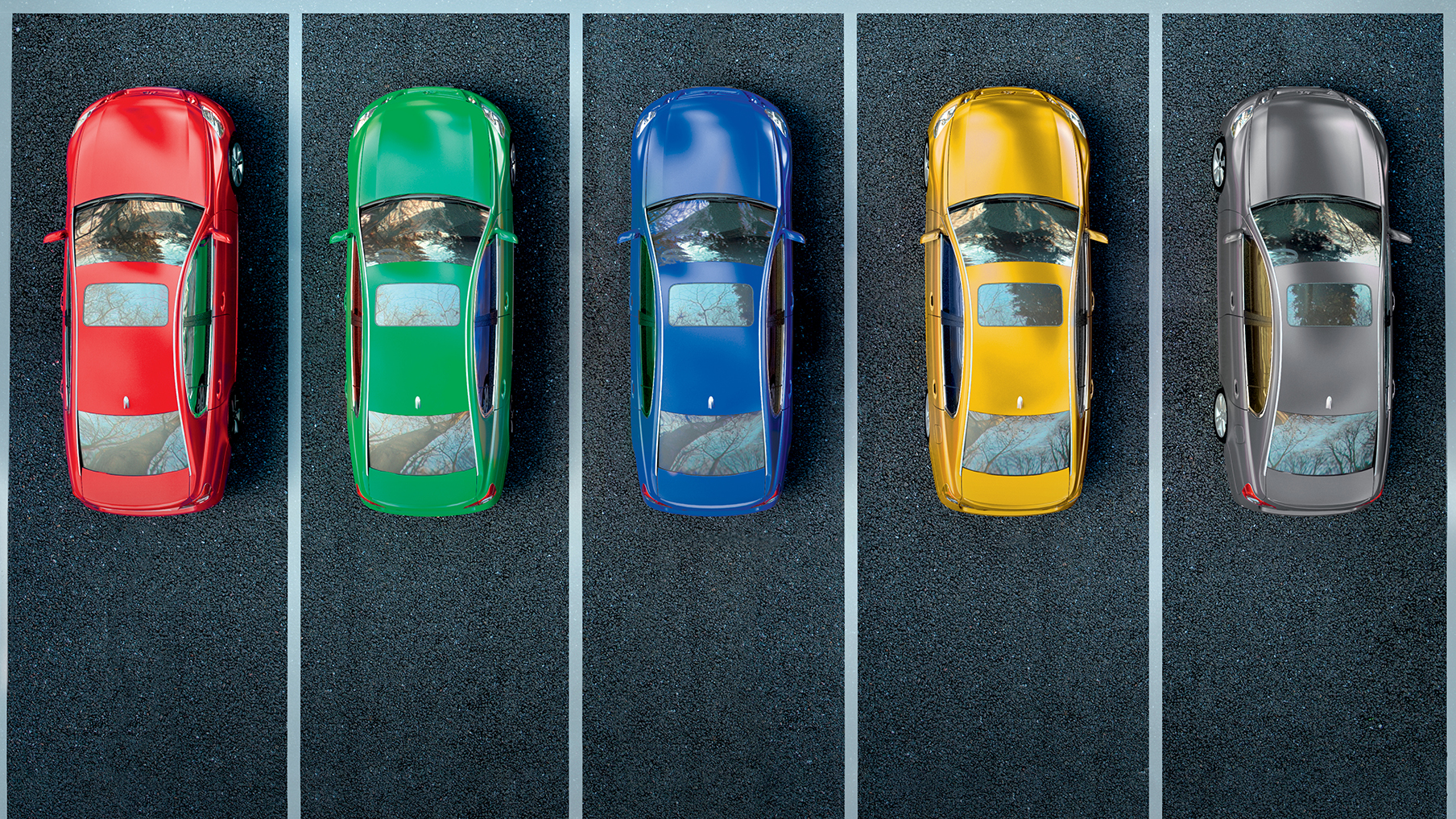Many theorists interpret our colour preferences as projections of our personalities. For example, Swiss psychologist Carl Jung argued that they mirror different human traits - fiery red (audacity); cool blue (the detached, analytical mind); earth green (soothing calm); and sunshine yellow (enthusiasm). However, colour consultant Sally Augustin is a bit sceptical: “Colours don’t have universal meanings – they change according to culture and personal experience. I still dislike one shade of blue because it reminds me of an allergy medicine I took as a child.” When it comes to cars, colour is a personal choice (and sometimes just depends on what’s available). Here, we debunk some of the car colour myths so you can confidently choose your next Motability Scheme vehicle...
Red isn’t as dangerous as you think
Red has inspired a strange variety of urban motoring legends. The most persistent myths are that red cars are involved in more accidents (unproven); more expensive to insure (untrue); and more likely to be stopped by police (unproven and untrue). If anything, studies suggest that white cars are pulled over more often. Despite such myths, 7.5 per cent of new cars sold in the UK last year were coloured red, according to Britain’s Society of Motor Manufacturers and Traders (SMMT).
Green can be mean
In America, green’s sinister reputation is rooted in the early, often tragic, history of motor racing. Green cars were involved in two of the deadliest ever accidents - in 1911 and 1920 - and the superstition proved so enduring that Rick Mears, who won four Indy 500s between 1979 and 1991, had the green wires in his car repainted red. This phobia is not wholly American: one study found that 36 per cent of British drivers believe green is unlucky; another study found that green only accounted for 2.8 per cent of new cars bought in Britain last year.
A colour that shouldn’t make us feel blue
Many of our attitudes to colour are, Sally says, “vestiges of our primordial selves. If you ask anyone anywhere to name their favourite colour, they will probably say blue. This may be because when our ancestors saw this colour – be it in a clear sky or a watering hole – it was a good sign.” These attitudes are much older than blue’s association with sadness, which was first acknowledged in England at the end of the 18th century. Around 15.1 per cent of new cars purchased in Britain last year were blue, making it the most popular primary colour for buyers.
Few of us feel mellow about yellow
If we like blue because it makes us think of a clear sky, why don’t we love yellow, the colour of sunlight? It is the least popular primary colour in every country where preferences are measured, a prejudice that, even after an exhaustive trawl through research, still perplexes Sally. There are competing theories - it is associated with bile, fever and decadence, courtesy of Oscar Wilde, who always sported a yellow daffodil in his lapel - but none are entirely convincing. The dislike is certainly real - only 0.6 per cent of new vehicles in the UK last year were yellow - and, unfortunately, the theory that because they are so rare, they have a higher resale value is not supported by research.
Grey stands for uncertainty
The three most popular choices for car buyers last year were grey (26 per cent), black (20 per cent) and white (16 per cent). Why have car colours become so monochrome? Sally says it partly reflects the age we live in. “In times of great uncertainty, we instinctively prefer quieter, more conservative colours. That happened in the Great Depression of the 1930s – when cars were more likely to be sombre greens and greys – and we are seeing something similar now.” Fashion has also played its part. White was deemed irredeemably dull until Apple rebranded it as clean, sleek and modern. In Sally’s view, colour is recurrent so drivers will, eventually, make brighter, bolder choices.
COLOURFUL FACTS
- Although still a minority choice for British car owners, sales of green cars rose by 71 per cent last year, and were especially popular in London.
- Strathclyde is the British county which bought the most yellow cars in 2023 – 677 – making it the best place to play the yellow car game.
- The three least liked car colours are cream, maroon and pink, which collectively accounted for less than 1 per cent of sales in 2023.
- The future doesn’t look so bright for orange: sales in this shade fell 14 per cent in 2023 and it only accounted for only a little over one per cent of new registrations.





